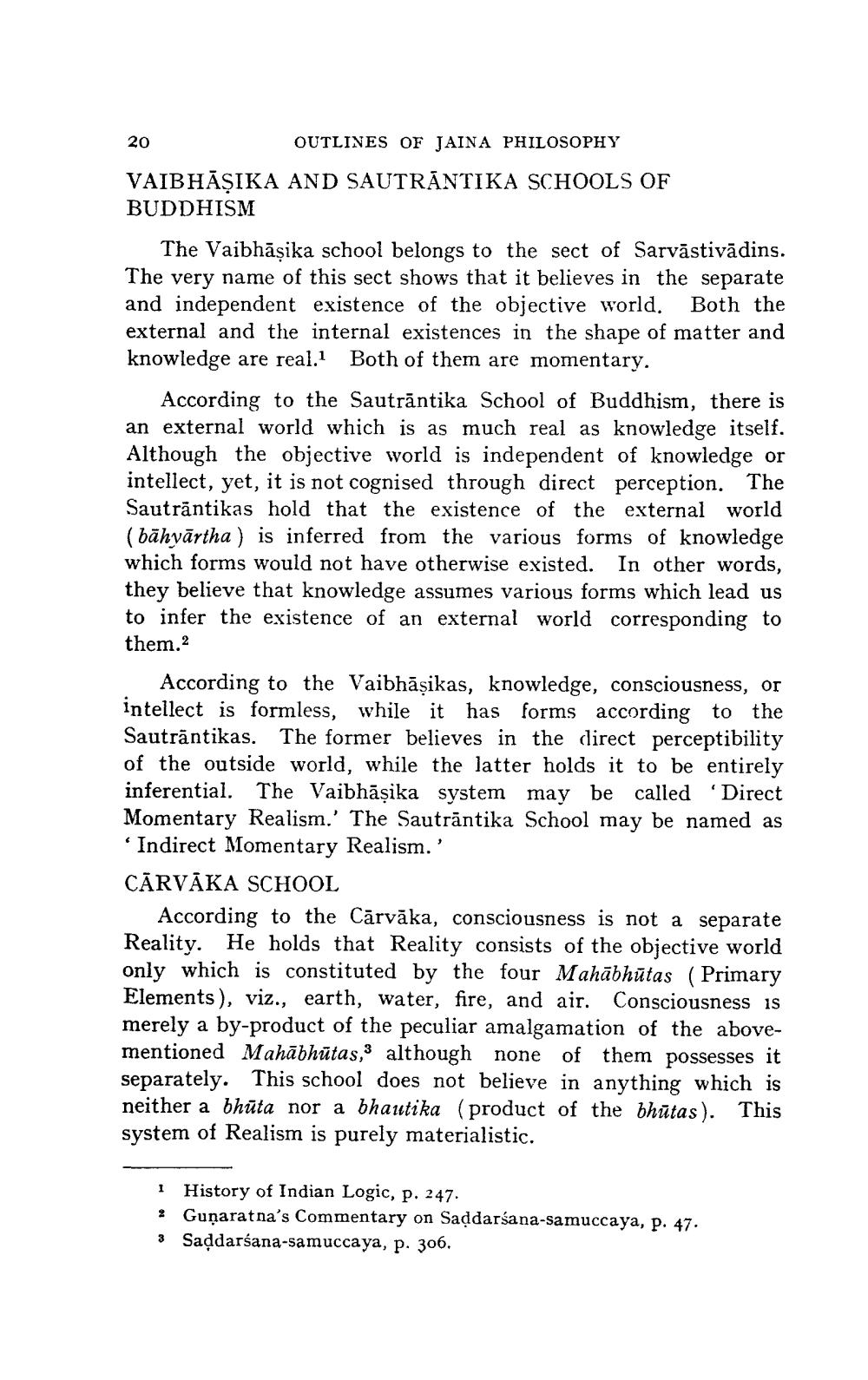________________
20
OUTLINES OF JAINA PHILOSOPHY VAIBHĀȘIKA AND SAUTRĀNTIKA SCHOOLS OF BUDDHISM
The Vaibhāșika school belongs to the sect of Sarvāstivādins. The very name of this sect shows that it believes in the separate and independent existence of the objective world. Both the external and the internal existences in the shape of matter and knowledge are real. Both of them are momentary.
According to the Sautrāntika School of Buddhism, there is an external world which is as much real as knowledge itself. Although the objective world is independent of knowledge or intellect, yet, it is not cognised through direct perception. The Sautrāntikas hold that the existence of the external world (bāhyārtha ) is inferred from the various forms of knowledge which forms would not have otherwise existed. In other words, they believe that knowledge assumes various forms which lead us to infer the existence of an external world corresponding to them.2
According to the Vaibhāsikas, knowledge, consciousness, or intellect is formless, while it has forms according to the Sauträntikas. The former believes in the direct perceptibility of the outside world, while the latter holds it to be entirely inferential. The Vaibhāṣika system may be called Direct Momentary Realism.' The Sautrāntika School may be named as 'Indirect Momentary Realism.' CĀRVĀKA SCHOOL
According to the Cārvāka, consciousness is not a separate Reality. He holds that Reality consists of the objective world only which is constituted by the four Mahābhūtas (Primary Elements ), viz., earth, water, fire, and air. Consciousness is merely a by-product of the peculiar amalgamation of the abovementioned Mahābhūtas, although none of them possesses it separately. This school does not believe in anything which is neither a bhūta nor a bhautika (product of the bhūtas). This system of Realism is purely materialistic.
1 History of Indian Logic, p. 247. 2 Gunaratna's Commentary on Saddarśana-samuccaya, p. 47. 3 Saddarśana-samuccaya, p. 306.




